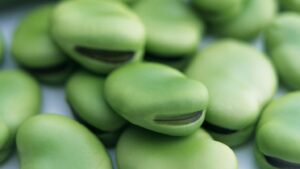While faba beans pack a high-protein punch — making them rich with promise as an alternative to meat and dairy sources — the legume also has less desirable qualities, like compounds that cause flatulence and interfere with the body’s nutrient absorption.
Now, University of Alberta research has potentially improved on the standard processes used to capture the protein from the bean, along with starch and dietary fibre, while leaving the rest behind.
The chemical-free method also uses less energy, making the process more sustainable, says Brasathe Jeganathan, who conducted the work to earn a PhD in food science and technology from the Faculty of Agricultural, Life & Environmental Sciences.
Called dry and wet fractionation, the separation methods are crucial in eventually making the bean more of a worldwide “dietary staple,” Jeganathan says.
The new process also ensures that the protein remains unchanged by chemicals, preserving its potential for use in developing clean-label vegetarian food products or supplementing cereal-based staple foods.
Faba beans, also known as fava beans or broad beans, contain 22 to 36 per cent protein, a benefit that could make them a viable, secure food source for a growing global population, she adds.
“By 2050 we are expected to feed 9.7 billion people, with demand expected to double for animal-based protein, but we can’t completely rely on that as a sustainable source in the long run. Alternative plant sources such as faba beans have lower environmental footprints and can, at the same time, provide adequate protein.”
The legume could also help meet the growing demand for vegetarian and vegan diets, with more than 40 per cent of Canadians actively trying to eat more plant-based food, she notes. For more info visit the University of Alberta website.












